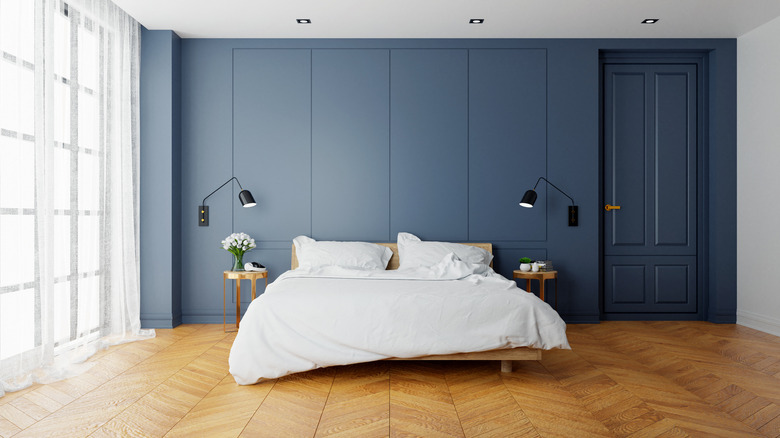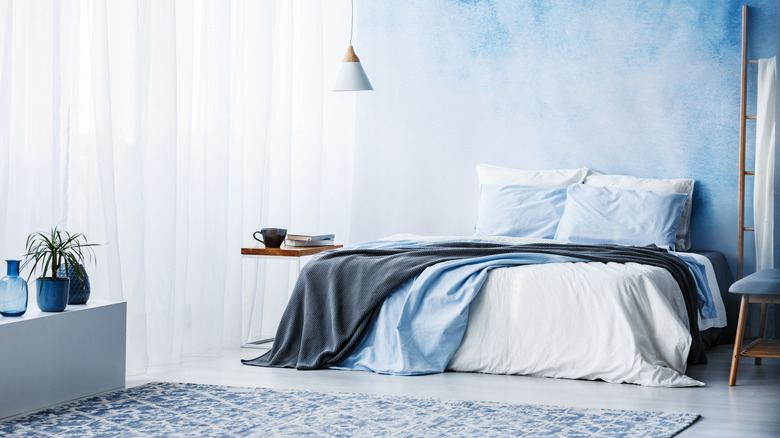The Color You Need In Your Bedroom For A Better Night's Sleep
Getting a good night's sleep is vital to your health, but it can be harder to attain those precious Zzzs than people realize. Everything from the temperature of your room to the sheets can affect your slumber, and setting up for success takes some work. One of the biggest factors that disrupt or benefit sleep is the color of your bedroom. According to Early Bird by Amerisleep, certain shades or tones can throw off your snoozing patterns, leaving you feeling awake and in a negative headspace.
Picking the right color for your room comes down to more than just decorating schemes. You want to be able to close your eyes and drift off, getting the chance to absorb your crucial eight hours to function during the day. When it comes to painting your sleep space, you want to opt for a palette that increases calm and serenity, which is why this color is one of the best, according to psychologists. If you're ready for a great rest, try this shade on your walls and enjoy a relaxed, rejuvenated state of mind.
Blue is the best color for sleep
You may or may not have guessed that blue is actually the best color to garner a solid night's slumber. This option has been associated with calming vibes and a peaceful ambiance for centuries, and it can help your mind and body decompress even after a stressful day. According to Our Sleep Guide, the human eye actually contains receptors that can absorb and process the positive effects of the color blue. Your brain understands it as positive and soothing, helping the rest of your body relax by sending signals to bring your heart rate down (via EatingWell).
One of the perks of using blue in your décor is that there are so many shades and hues to choose from. Each one offers a slightly different feel or atmosphere, but the overall color is scientifically proven to help you sleep. With that in mind, you can explore the different tones until you find one that suits your mood and existing interior, creating the ideal area for unwinding and eventually falling into REM.
Add blue accents
Light blue is considered one of the best shades to introduce calm into your space. The reason behind this is that pastels and neutrals are soothing to the nervous system, helping it find rest quicker than bolder, intense colors, according to Eating Well. Leaning into a white/blue hue can give you even more options for decorating and accents while also providing a cozy backdrop for the time you're spending surrounded by it.
You don't have to paint all the walls blue to benefit from the tranquil nature it provides. An accent wall is just as productive as an entire room coated in blue tones, and if you place it somewhere focal from where you sleep, your mind and eyes will be able to take it in before you drift off. To get the most out of this aesthetic, incorporate different shades in the form of throws, pillows, or bedding to compliment the wall color and pull it through the rest of the space.


